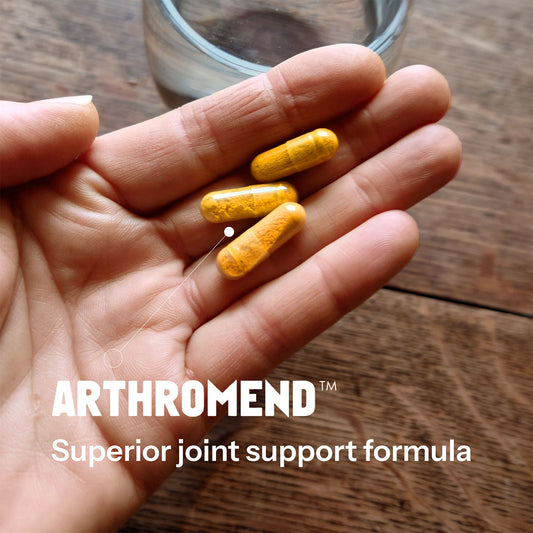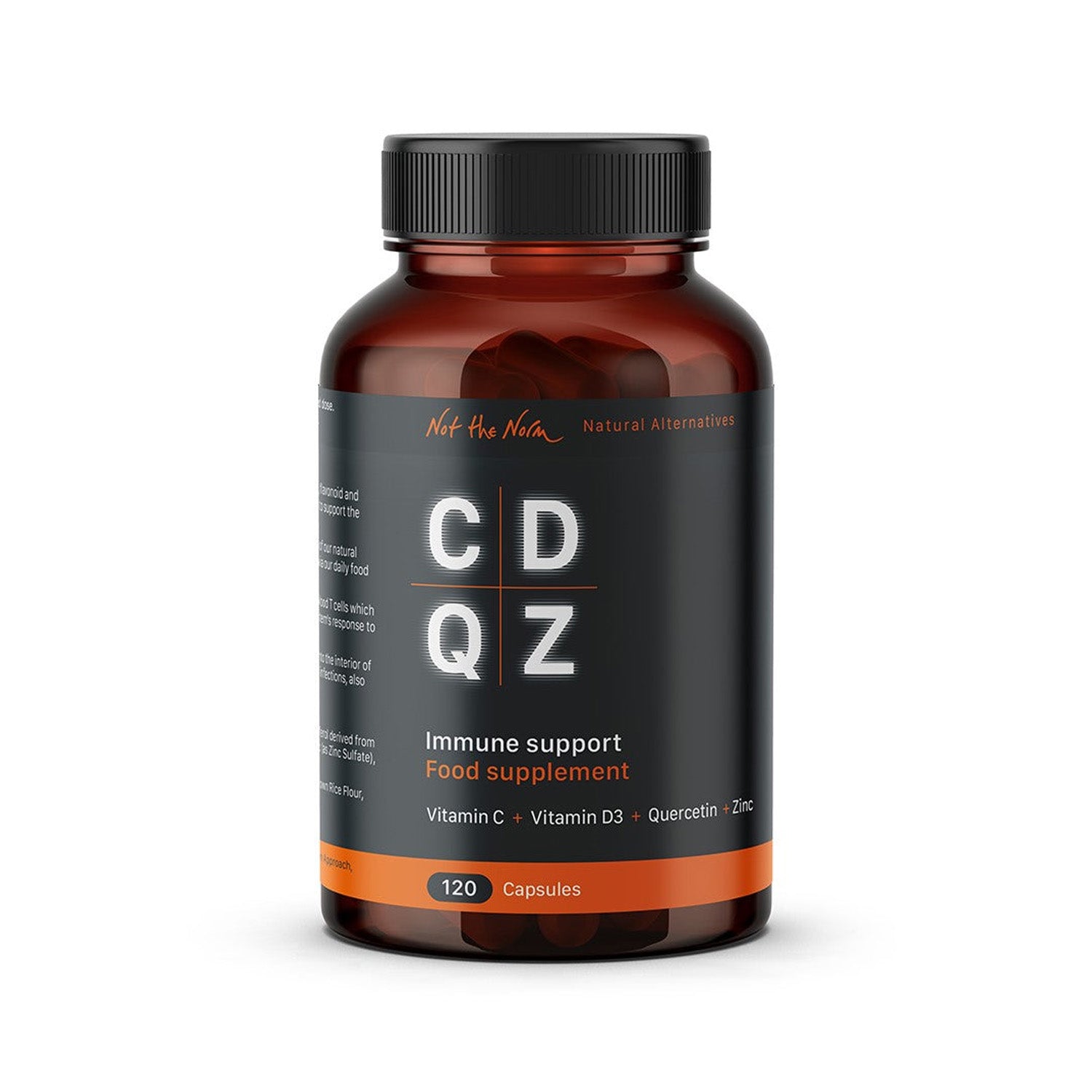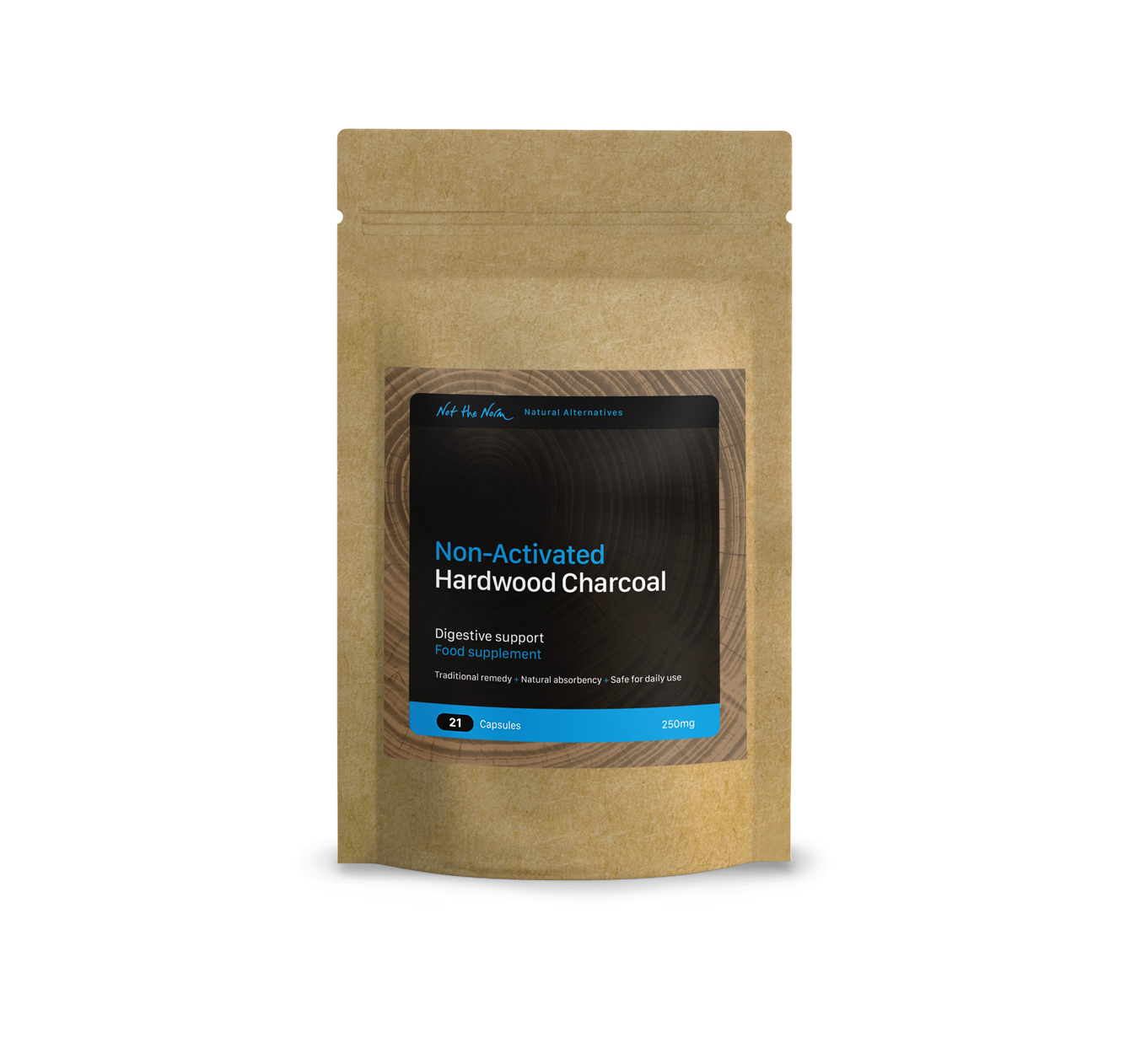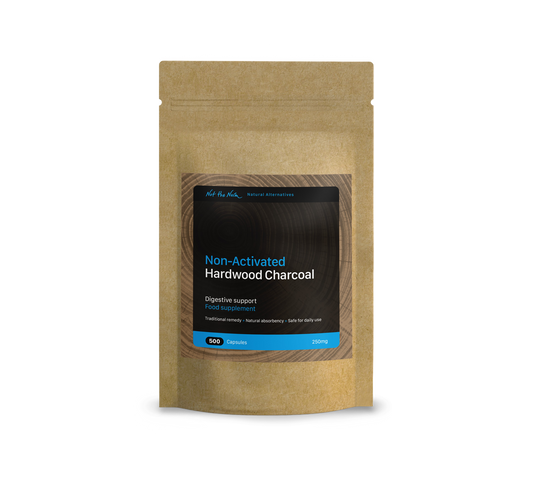Have you ever felt overwhelmed by the endless diet fads and health trends promising miraculous weight loss results? We’ve all been there, sifting through information, hoping to find something that actually works. Enter the powerful combo of intermittent fasting (IF) and non-activated charcoal—a dynamic duo that is reshaping how we approach weight loss and metabolic health.
In this post, we'll take a closer look at how these two techniques can work hand-in-hand to help you shed those extra pounds, improve your body metrics, protect your gut health, combat metabolic syndrome, and give you a fresh outlook on your health journey. Plus, we’ll dive into the case studies of Joe and Caroline, who both experienced remarkable transformations in just four weeks.
Intermittent Fasting: Timing is Everything
What Exactly is Intermittent Fasting?Let’s face it—dieting can be tough, but intermittent fasting is less about restrictions and more about timing. Essentially, IF is an eating pattern that alternates between periods of eating and fasting. There’s no need to avoid your favourite foods entirely. Instead, it’s about giving your body a break from digestion and letting it perform its natural processes.
There are several popular IF methods you might have heard about:
16/8 Method: Fast for 16 hours, eat during an 8-hour window. It’s like skipping breakfast but with science backing it up.5:2 Method: Eat normally for five days, restrict calorie intake to about 500-600 calories on two non-consecutive days.
Eat-Stop-Eat: Fast for a full 24 hours once or twice a week.
Here’s the lowdown on how intermittent fasting can help you torch fat and supercharge your metabolism:
1. Burn Baby, Burn: IF helps improve insulin sensitivity, which makes it easier for your body to access and burn stored fat. Your body becomes a fat-burning machine!
2. Hormones in Harmony: Fasting ramps up the production of norepinephrine and growth hormone, both of which play roles in breaking down body fat and maintaining muscle mass.
3. Cellular Clean-up Crew: Autophagy, a process where your body clears out damaged cells, is triggered by fasting, giving your metabolism a boost and refreshing your body from the inside out.
4. Natural Calorie Control: By narrowing your eating window, IF naturally reduces your calorie intake without making you feel deprived.
5. Revving Up the Metabolic Engine: The fasting periods help increase your metabolic rate, meaning you burn more calories even while lounging on the sofa.
6. Gut Health Guardian: Emerging research shows that intermittent fasting can play a crucial role in improving gut health by allowing the gut microbiome—our body's 'second brain'—to rejuvenate and flourish during fasting periods.
The Benefits in a Nutshell
- Goodbye, Belly Fat: IF targets abdominal fat, which is linked to various health issues.
- BMI Boost: As the pounds drop, your BMI becomes healthier too.
- Metabolic Youth Elixir: A more efficient metabolism means your metabolic age may get a reset, making you feel younger and more vibrant.
- Brain Power: Some studies suggest IF could also help sharpen your mind and protect against age-related brain issues.
- The Fountain of Youth?: With its potential to increase lifespan and improve overall health markers, IF might just be the closest thing we have to a real-life elixir of youth.
- Gut Health Guardian: Emerging research shows that intermittent fasting can play a crucial role in improving gut health by allowing the gut microbiome—our body's 'second brain'—to rejuvenate and flourish during fasting periods.
Non-Activated Charcoal: The Gentle Cleanser
What is Non-Activated Charcoal?
You might be familiar with activated charcoal, the trendy black powder that’s all the rage in beauty and wellness products, but what about its less aggressive sibling, non-activated charcoal? Unlike activated charcoal, which is superabsorbent, non-activated charcoal is a gentler option. It’s effective at binding unwanted toxins in your digestive tract but doesn't go overboard and snatch away beneficial nutrients.
How Non-Activated Charcoal Can Support Your Goals
Non-activated charcoal might not have superhero levels of absorbency, but it still offers significant benefits when it comes to supporting your weight loss journey:
1. Toxin Tamer: By binding to and helping eliminate toxins from your gut, it aids in keeping your digestive system clean and efficient.
2. Gut Health Hero: Removing unwanted substances can enhance nutrient absorption, leading to better digestion and potentially a trimmer waistline.
3. Hormonal Helper: A balanced gut means more regulated hunger hormones like leptin and ghrelin, which are essential in controlling your appetite and metabolism.
4. Bye-Bye, Bloat: Charcoal may help reduce bloating, giving you a more comfortable and slim appearance.
Why It’s Safe for Daily Use
One of the standout features of non-activated charcoal is its safety for daily use. Unlike its activated counterpart, non-activated charcoal isn't superabsorbent, meaning it won’t hoard away your essential vitamins and minerals. You can enjoy its benefits without the risk of nutrient depletion.
- Gentle Detox: Non-activated charcoal targets only the unwanted toxins, providing ongoing support for weight management.
- Daily Support: You can incorporate it into your routine regularly to help maintain digestive health, reduce bloating, and support your metabolism.
Protecting the Gut Microbiome: The Body’s ‘Second Brain’
Recent studies have highlighted the critical role of the gut microbiome—often called the body's 'second brain'—in regulating everything from mood to metabolism. Both intermittent fasting and non-activated charcoal contribute to maintaining a healthy gut flora by:1. Promoting Beneficial Bacteria: Intermittent fasting allows time for beneficial gut bacteria to proliferate, creating a balanced microbiome. Charcoal helps by removing unwanted toxins that may disrupt this balance.
2. Reducing Inflammation: A cleaner gut means less inflammation, which supports not just digestive health but also brain health.
3. Enhancing Communication: A healthy gut microbiome supports the gut-brain axis, leading to improved mood and cognitive functions.
4. Strengthening the Gut Barrier: A balanced microbiome strengthens the gut barrier, which prevents harmful substances from entering the bloodstream, thus promoting overall health and reducing systemic inflammation.
Understanding Metabolic Syndrome: The Hidden Health Threat
What is Metabolic Syndrome?
Metabolic syndrome is not a single condition but rather a cluster of risk factors that, when combined, increase your risk of developing heart disease, stroke, and type 2 diabetes. It includes conditions such as:
Increased Blood Pressure: Consistently high blood pressure levels, putting stress on your cardiovascular system.
High Blood Sugar Levels: Pre-diabetic glucose levels that can progress to full-blown diabetes if not addressed.
Excess Body Fat Around the Waist: Central obesity, especially visceral fat, which poses significant health risks.
Abnormal Cholesterol or Triglyceride Levels: Imbalances in blood lipid levels that can lead to atherosclerosis.
Metabolic syndrome is a silent yet dangerous health threat. It’s often overlooked because the individual conditions might seem manageable on their own. However, when combined, they significantly elevate your risk of severe health complications. Metabolic syndrome significantly raises your chances of developing heart disease and stroke. Insulin resistance, a key component, can lead to elevated blood sugar levels and eventually diabetes. Chronic inflammation is both a cause and consequence of metabolic syndrome, contributing to other diseases, and metabolic syndrome has been linked to an increased risk of mortality due to its association with several chronic diseases.
Understanding and addressing metabolic syndrome is critical for maintaining long-term health and avoiding these serious complications.
When Intermittent Fasting Meets Non-Activated Charcoal: A Powerful Partnership
1. Combatting Metabolic Syndrome
Intermittent fasting and non-activated charcoal offer a proactive approach to managing and potentially reversing metabolic syndrome:
Improved Insulin Sensitivity: Intermittent fasting enhances insulin sensitivity, reducing the risk of type 2 diabetes and lowering blood sugar levels.
Reduced Visceral Fat: The combination targets visceral fat, a primary factor in metabolic syndrome, improving your waistline and health.
Cholesterol Management: Fasting can positively affect lipid profiles, reducing bad cholesterol (LDL) and triglycerides, while charcoal helps in binding and eliminating excess fats.
Lowered Blood Pressure: With reduced fat and improved vascular function, blood pressure can naturally decrease, lowering cardiovascular risks.
2. Turbocharged Detoxification
As your body shifts into fat-burning mode during fasting, it naturally begins to release toxins stored within your fat cells. These toxins are often sequestered in fat to protect your organs from harm. However, as the fat burns away, these toxins are liberated into the bloodstream and eventually find their way back into your intestines. This is where non-activated charcoal steps in as the perfect sidekick. It acts like a magnet, adsorbing these released toxins and helping to eliminate them from your system, ensuring that they don’t circulate back into your body.
3. Synergistic Fat-Burning Effects
When combined, IF and non-activated charcoal amplify each other's benefits, creating a more potent weight loss strategy:
The fasting periods increase fat oxidation, while charcoal supports the digestive system in processing the by-products of fat metabolism. Charcoal helps keep your intestines clear of toxins, enhancing nutrient absorption and gut health, and improved gut health leads to more balanced hunger hormones, helping control appetite and reducing unhealthy cravings.
Real-Life Examples (names changed)
Here we have two real-life data sets to demonstrate how IF combined with non-activated charcoal can work together over just one short month to achieve a healthier status.
Meet Joe: The Starting Point
Joe, a 49-year-old with the following health metrics:
- Weight: 102.4 kg (225.8 lbs)
- BMI: 30.6 (Obese)
- Body Fat Percentage: 28.6% (Obese)
- Subcutaneous Fat Percentage: 24.7% (High)
- Visceral Fat Level: 13 (High)
- Metabolic Age: 54
- Blood Pressure: 140/90 mm Hg (Hypertension)
- Blood Sugar Level: 110 mg/dL (Prediabetic)
Joe is determined to improve his health and combat the looming threat of metabolic syndrome. After researching various options, he has decided to embark on a journey combining intermittent fasting and non-activated charcoal.
Joe's 4-Week Journey
Week 1: Laying the Foundation
Joe is starting with the 16/8 intermittent fasting method and incorporating a daily intake of non-activated charcoal. In the first week, Joe experiences subtle changes as his body adapts to the new routine. His weight starts to drop, and there is a noticeable decrease in his BMI and body fat percentage. A reduction in blood pressure and blood sugar levels indicate that his metabolic health is beginning to improve, marking a promising start to his journey.
Week 2: Momentum Builds
By week two, Joe's body has adapted well to the fasting schedule, and he is beginning to see more significant changes. The combination of fasting and charcoal has effectively reduced his visceral fat level and improved his blood pressure, which is now approaching healthier ranges. Joe also feels more energetic and less prone to afternoon slumps—a benefit he attributes to the enhanced gut health and reduced inflammation. His blood sugar levels are showing a promising decline, moving closer to normal ranges.
Week 3: Significant Shifts
Week three marks a period of substantial transformation for Joe. The persistent efforts are paying off as his body fat percentage continues to decrease. His visceral fat level drops significantly, indicating a healthier distribution of body fat. Joe's metabolic age is now closer to his actual age, reflecting a rejuvenated metabolism. Notably, Joe's blood pressure and blood sugar levels continue to decline, further reducing his risk for metabolic syndrome. He is also noticing improved focus and mental clarity, likely due to better gut-brain communication facilitated by the regimen.
Week 4: A New Beginning
By the end of the month, Joe has achieved a remarkable transformation. His weight has dropped by 5.4 kg (nearly 12 lbs), moving him out of the "Obese" BMI category and closer to a healthy weight range. His body fat percentage, visceral fat level, and subcutaneous fat percentage have all improved, showcasing a leaner, healthier physique. Joe's metabolic age is now just one year above his actual age, signifying a robust metabolic function. His blood pressure and blood sugar levels are within healthy ranges, indicating a significant reduction in his risk for metabolic syndrome.
Summary of Improvements
| Metrics | Initial | Final | Change |
| Weight (kg) | 102.4 | 97.0 | -5.4 kg |
| BMI | 30.6 | 29.2 | -1.4 |
| Body Fat Percentage | 28.6% | 25.8% | -2.8% |
| Subcutaneous Fat % | 24.7% | 22.5% | -2.2% |
| Visceral Fat Level | 13 | 11.5 | -1.5 |
| Metabolic Age | 54 | 50 | -4 years |
| Blood Pressure | 140/90 | 128/80 | -12/-10 mm Hg |
| Blood Sugar Level | 110 mg/dL | 90 mg/dL | -20 mg/dL |
Joe's journey illustrates the remarkable potential of combining intermittent fasting with non-activated charcoal to achieve significant improvements in body composition, metabolic health, and overall vitality.
Meet Caroline: The Starting Point
Caroline, a 52-year-old woman, has decided to take charge of her health by embarking on a journey similar to Joe's. Her initial health metrics are as follows:
Caroline is keen on maintaining her health and wants to enhance her overall vitality while preventing any future health complications. She has opted for a 16/8 intermittent fasting regimen, combined with daily non-activated charcoal supplementation, to see how it might aid her in this mission.
Caroline's 4-Week Journey
Week 1: The Initial Adjustment
Caroline starts the first week by following the 16/8 intermittent fasting schedule, integrating non-activated charcoal into her routine. She experiences mild detox symptoms initially but quickly adapts to the fasting periods. Her weight shows a slight decrease, and she feels more energetic and focused. The first week marks the beginning of subtle changes, including a slight reduction in blood pressure and blood sugar levels, indicating her body's adjustment to the new regimen.
Week 2: Building Momentum
As Caroline's body adapts to the fasting routine, she begins to notice more significant changes. Her weight continues to drop, and her body fat percentage improves as well. Caroline's metabolic age decreases, reflecting an enhanced metabolic rate. She feels less bloated, attributing this to the detoxifying effects of non-activated charcoal. By the end of the second week, her blood sugar levels are nearing normal ranges, which is a positive sign for her metabolic health.
Week 3: Consistent Progress
Caroline's consistency with the IF plan and non-activated charcoal supplementation continues to pay off. Her visceral fat level drops further, and her overall health metrics are showing steady improvements. The reduction in her blood sugar level suggests a decrease in insulin resistance, and her blood pressure is now within a healthy range. Caroline is noticing improved digestion and less bloating, which she believes is due to the combined effects of fasting and charcoal in promoting gut health.
Week 4: Achieving Her Goals
By the end of the four-week journey, Caroline has successfully transformed her health profile. Her weight loss of 3.75 kg (approximately 8.2 lbs) is complemented by a notable reduction in body fat and visceral fat levels. Her metabolic age has decreased to 48, indicating a more youthful metabolic function. Caroline's blood pressure and blood sugar levels are now firmly within the healthy range, reducing her risk for metabolic syndrome and other health complications. She reports feeling more energised, less stressed, and more focused—a testament to the holistic benefits of her regimen.
Summary of Caroline's Improvements
| Metrics | Initial | Final | Change |
|---|---|---|---|
| Weight (kg) | 66.75 | 63.0 | -3.75 kg |
| BMI | 27.9 | 26.4 | -1.5 |
| Body Fat Percentage | 23.7% | 21.8% | -1.9% |
| Subcutaneous Fat % | 25.6% | 24.3% | -1.3% |
| Visceral Fat Level | 6 | 5.3 | -0.7 |
| Metabolic Age | 52 | 48 | -4 years |
| Blood Pressure | 130/85 | 122/78 | -8/-7 mm Hg |
| Blood Sugar Level | 105 mg/dL | 95 mg/dL | -10 mg/dL |
Caroline's case study provides a compelling example of how intermittent fasting and non-activated charcoal can lead to improved health outcomes, emphasising the potential benefits for women aiming to enhance their metabolic health and overall well-being.
The Science Behind the Success: Mechanisms at Work
1. Hormonal Optimisation
-
Insulin Sensitivity: Intermittent fasting enhances insulin sensitivity, reducing the risk of insulin resistance and type 2 diabetes. This mechanism is particularly beneficial for individuals with elevated blood sugar levels, as described in both Joe and Caroline's cases.
-
Growth Hormone Boost: Fasting triggers the release of growth hormone, which supports fat metabolism and preserves lean muscle mass. This hormone plays a crucial role in maintaining metabolic health and supporting weight loss efforts.
2. Cellular Clean-up and Regeneration
-
Autophagy Activation: Fasting induces autophagy, a process where cells clear out damaged components, promoting cellular renewal and improving metabolic function. This process contributes to the rejuvenation of body tissues and the reduction of metabolic age, as observed in both Joe and Caroline's cases.
3. Gut Health Enhancement
-
Microbiome Balance: Both intermittent fasting and non-activated charcoal contribute to a balanced gut microbiome, which is essential for optimal digestion, nutrient absorption, and immune function. A healthy gut microbiome supports overall well-being and enhances the body's ability to maintain a healthy weight.
-
Reduced Inflammation: By promoting gut health and reducing toxin load, the combination of fasting and charcoal helps decrease inflammation, a key factor in metabolic syndrome and other chronic health conditions.
4. Enhanced Fat Metabolism
-
Increased Fat Oxidation: Intermittent fasting encourages the body to utilise stored fat for energy, resulting in improved fat metabolism and weight loss. This effect is amplified by the detoxifying properties of non-activated charcoal, which aid in the efficient processing of fat metabolism byproducts.
5. Long-Term Health Benefits
-
Reduced Risk of Chronic Diseases: By addressing key risk factors such as obesity, high blood pressure, and elevated blood sugar levels, intermittent fasting and non-activated charcoal contribute to a lower risk of developing chronic diseases like heart disease, diabetes, and metabolic syndrome.
Practical Tips for Getting Started
1. Choose the Right IF Method
Select a fasting schedule that fits your lifestyle. The 16/8 method is a popular choice for beginners due to its simplicity and ease of implementation.
2. Incorporate Non-Activated Charcoal
Start with a capsule of non-activated charcoal twice daily, and gradually increase it based on your body's response. It's best taken with a large glass of water at least an hour before meals or two hours after eating to maximise its detoxifying effects.
3. Stay Hydrated
Drink plenty of water throughout the day to support detoxification and maintain proper hydration. Herbal teas and black coffee (without sugar, milk or cream) are also permitted options during fasting periods.
4. Mindful Eating During Eating Windows
Focus on consuming nutrient-dense foods during your eating windows, rich in proteins, healthy fats, and a variety of fruits and vegetables, particularly green leafy ones. This will provide your body with the necessary nutrients to support energy levels and metabolic function. Many people are adopting a ketogenic diet combined with IF.
5. Listen to Your Body
Pay attention to how your body responds to the fasting and charcoal regimen. If you experience any adverse effects or discomfort, adjust the approach accordingly or consult a healthcare professional.
Your Path to a Healthier You
Intermittent fasting and non-activated charcoal offer a promising approach to achieving weight loss and improved metabolic health. As demonstrated in the case studies of Joe and Caroline, this powerful combination can lead to significant improvements in body composition, metabolic function, and overall well-being. By understanding the mechanisms at work and implementing practical tips, you can embark on your own journey toward a healthier, more vibrant you.
Whether you're aiming to shed a few pounds, improve your metabolic health, or simply feel more energised and focused, consider giving this dynamic duo a try. Remember, the journey to health is a marathon, not a sprint. Be patient, stay consistent, and embrace the transformative power of intermittent fasting and non-activated charcoal. Your future self will thank you!


















